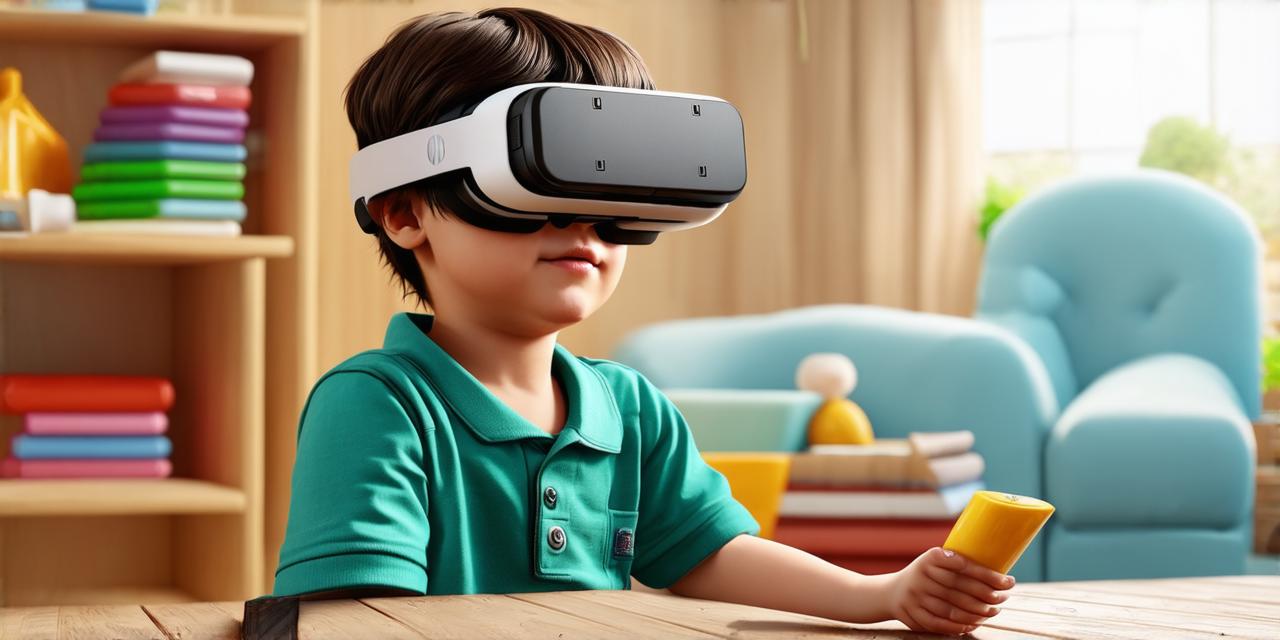Here’s the corrected HTML code for the article:
Virtual reality (VR) technology has come a long way in recent years, and it’s now possible to create immersive, interactive experiences that were once only the stuff of science fiction. With VR headsets becoming more affordable and accessible, many people are asking whether this technology is safe and appropriate for children.
As a VR developer, you may be wondering how to navigate these complex issues and ensure that your creations are both fun and safe for young users.
Understanding the Science Behind VR Safety for Children
Before we dive into the practical considerations of creating safe and appropriate VR experiences for children, it’s important to understand the science behind VR safety. One of the primary concerns when it comes to VR is motion sickness, which can be caused by the disconnect between what a user sees on their screen and what they feel in reality.
A study published in the Journal of Child and Family Studies found that children under the age of 7 are particularly susceptible to motion sickness in VR environments. However, this risk can be mitigated by carefully designing VR experiences that take into account factors such as screen size, refresh rate, and content.
In addition to motion sickness, there are other potential risks associated with VR use, including eye strain, headaches, and nausea. These symptoms can be caused by a variety of factors, including the type of screen used, the brightness and contrast of the environment, and the complexity of the content.
To minimize these risks, it’s important to create VR experiences that are both engaging and age-appropriate. This means carefully designing content that is appropriate for the intended audience, as well as using techniques such as progressive exposure to build up users’ tolerance to VR environments over time.
Designing Safe and Appropriate VR Experiences for Children
Now that we have a better understanding of the potential risks associated with VR use, let’s turn our attention to practical tips for creating safe and appropriate VR experiences for children.
One of the most important considerations when designing VR content for children is ensuring that it’s age-appropriate. This means considering factors such as language, themes, and visual content, as well as the level of interaction required from users.
For younger children, it’s important to create experiences that are both engaging and easy to navigate. This can be achieved by using simple controls, intuitive interfaces, and clear visual cues. For older children, more complex interactions and challenges may be appropriate, but care should still be taken to ensure that the content is age-appropriate and not too overwhelming.
Another important consideration when designing VR experiences for children is safety. This means taking into account potential hazards such as tripping hazards, as well as ensuring that users are able to exit the VR environment safely if necessary.
To promote safety in VR environments, it’s important to use techniques such as progressive exposure, which involves gradually increasing the intensity of a VR experience over time. This can help build up users’ tolerance to VR environments and reduce the risk of motion sickness, eye strain, and other potential hazards.
Mitigating Risks Associated with VR Use for Children
While there are many potential risks associated with VR use, it’s important to remember that these risks can be mitigated through careful design and implementation of VR experiences.
- Use appropriate screen size and refresh rate: By using screens that are large enough and refresh at a high enough rate, you can help reduce the risk of motion sickness and eye strain in VR environments.
- Design content with progressive exposure: Progressive exposure involves gradually increasing the intensity of a VR experience over time. This can help build up users’ tolerance to VR environments and reduce the risk of motion sickness, eye strain, and other potential hazards.
- Use appropriate lighting and contrast: By using appropriate lighting and contrast in VR environments, you can help reduce the risk of eye strain and other potential hazards associated with VR use.
- Provide clear visual cues: Clear visual cues can help guide users through VR experiences and reduce the risk of disorientation and confusion.
- Test for safety: Before releasing any VR experience, it’s important to test for safety and ensure that users are able to exit the VR environment safely if necessary.
Summary
Virtual reality technology is rapidly changing the way we interact with the world around us. While there are many potential benefits associated with VR use, there are also potential risks that must be carefully considered when creating VR experiences for children. By understanding the science behind VR safety and appropriateness for children, as well as practical tips for designing safe and engaging VR experiences, you can help ensure that your creations are both fun and safe for young users.
FAQs
Here are some frequently asked questions about VR safety and design:
- Is motion sickness a common issue in VR?
- What are some ways to mitigate the risk of motion sickness in VR?
- Are there any potential risks associated with eye strain in VR environments?
- How can I test for safety before releasing a VR experience for children?
Yes, motion sickness can be a common issue in VR environments, particularly for children under the age of 7.
Some ways to mitigate the risk of motion sickness in VR include using appropriate screen size and refresh rate, designing content with progressive exposure, and providing clear visual cues.
Yes, prolonged use of VR can lead to eye strain and other potential hazards such as headaches and nausea.
Before releasing a VR experience for children, it’s important to test for safety and ensure that users are able to exit the VR environment safely if necessary.
